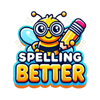What Is the NYT Spelling Bee?
For the uninitiated, the New York Times Spelling Bee is a daily word puzzle that challenges players to create as many valid words as they can from seven letters arranged in a honeycomb shape. One of those letters (the center one) is mandatory in every word you make.
The game is accessible via the NYT website or app, and although there’s a free version, full access is part of the New York Times Games subscription.
The Rules—Simple but Sneaky
You must use the center letter in every word.
Words must be at least four letters long.
Plurals ending in “s” are generally not allowed.
Proper nouns and hyphenated words are off-limits.
Each puzzle has a set of accepted words and one elusive word called the pangram—a word that uses all seven letters at least once. Finding the pangram is one of the most satisfying moments for any player.
Why Are NYT Spelling Bee Answers So Satisfying?
There’s a strange kind of joy in hunting down obscure words, hitting “Enter,” and seeing the word light up in yellow with a pleasant ding. Some words seem obvious in hindsight, but when you’re in the game, your mind just blanks.
Part of the appeal lies in the game’s design—it’s just challenging enough to be addictive, but not so hard that you give up. Plus, each day’s puzzle resets at 3 a.m. ET, giving you a fresh shot at redemption (or obsession).
Common Types of Spelling Bee Words
If you’re trying to improve your game, start paying attention to the types of words that usually appear:
Prefixes and Suffixes: Many valid words are built from simple root words with common prefixes (re-, un-, pre-) or suffixes (-ing, -ly, -ness).
Obscure but Legal Words: Think of words like olio, elan, or ennui—these are dictionary-approved and often show up.
Scientific or Technical Words: You’d be surprised how often biology or chemistry terms pop up, especially in the longer puzzles.
Verb Variants: Words like goad, goading, goaded can all be valid.
Words With Double Letters: Don’t ignore words like deed, good, or poppy—they often sneak through.
Where to Find NYT Spelling Bee Answers Today
We get it. Some days, the words just aren’t clicking. Whether it’s the stress of work or just a foggy brain, you might be tempted to Google “spelling bee answers today”—and honestly, that’s okay once in a while.
Several websites post daily answers after a certain time (usually after 12 p.m. ET), but if you want to avoid spoilers, we suggest bookmarking only one trusted source and visiting it only when you’ve genuinely run out of steam. The idea is to learn, not just win.
Popular sites include:
Reddit threads like r/NYTSpellingBee
Dedicated blogs with daily updates
Crossword and puzzle help forums
However, we recommend using the answer guides as tools for reflection. Don’t just copy-paste—take note of what you missed and why.
How to Improve Without Relying on Spelling Bee Answers
Want to get better at the game naturally? Here are a few tips:
1. Warm-Up with Word Lists
Use free word list apps or flashcards to practice anagrams and roots. Websites like WordHippo or Lexico are great tools.

2. Practice with Past Puzzles
Many platforms archive old Spelling Bee puzzles. Practicing them can give you a feel for the types of words the NYT favors.
3. Read More—But Not Just Novels
Non-fiction, science magazines, and older literature (like 19th-century essays) will introduce you to the kind of vocabulary that makes the Spelling Bee tick.
4. Try Word Games Like Boggle or Scrabble
These games also sharpen your ability to spot word patterns, which is key to mastering the puzzle.
5. Learn the Pangram Mindset
Start thinking about how all seven letters can work together. Make combinations and play around with consonant-vowel pairings until something clicks.
Is Using Spelling Bee Answers Cheating?
There’s a big debate in the community about whether checking the NYT Spelling Bee answers counts as cheating. Our take? It depends on the intention. If you’re peeking out of curiosity or as a learning moment, that’s perfectly fine. But if it becomes a daily crutch, you might be robbing yourself of the fun and challenge the game is designed for.
Final Thoughts
The Spelling Bee isn’t just about showing off your vocabulary—it’s a mental workout, a daily ritual, and a surprisingly powerful way to stay sharp. Whether you’re hunting for spelling bee words, double-checking the spelling bee answers, or just trying to find the pangram, you’re part of a growing global hive of word lovers.
So the next time you’re stuck, take a break, come back fresh, and maybe—just maybe—you’ll find that golden word on your own.
Bonus Tip: Bookmark this blog for updates, tips, and gentle nudges toward better vocabulary without giving it all away. Let’s grow your word power, one letter at a time!





zoritoler imol
I am really impressed with your writing skills as neatly as with the format for your weblog. Is this a paid theme or did you modify it yourself? Anyway stay up the excellent quality writing, it’s uncommon to look a great weblog like this one these days..
joann armke
amal, i play the bee every night. addicted. thank you for covering this game. i am an editor; i feel compelled to offer a correction about pangrams. You advise that there is one special word, the pangram, that uses all seven letters. in truth, a bee often may have more than one pangram, sometimes several. i have seen as many as five.